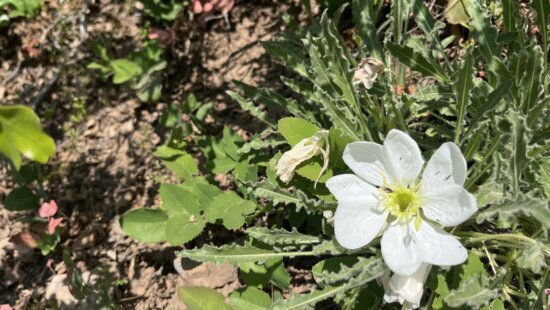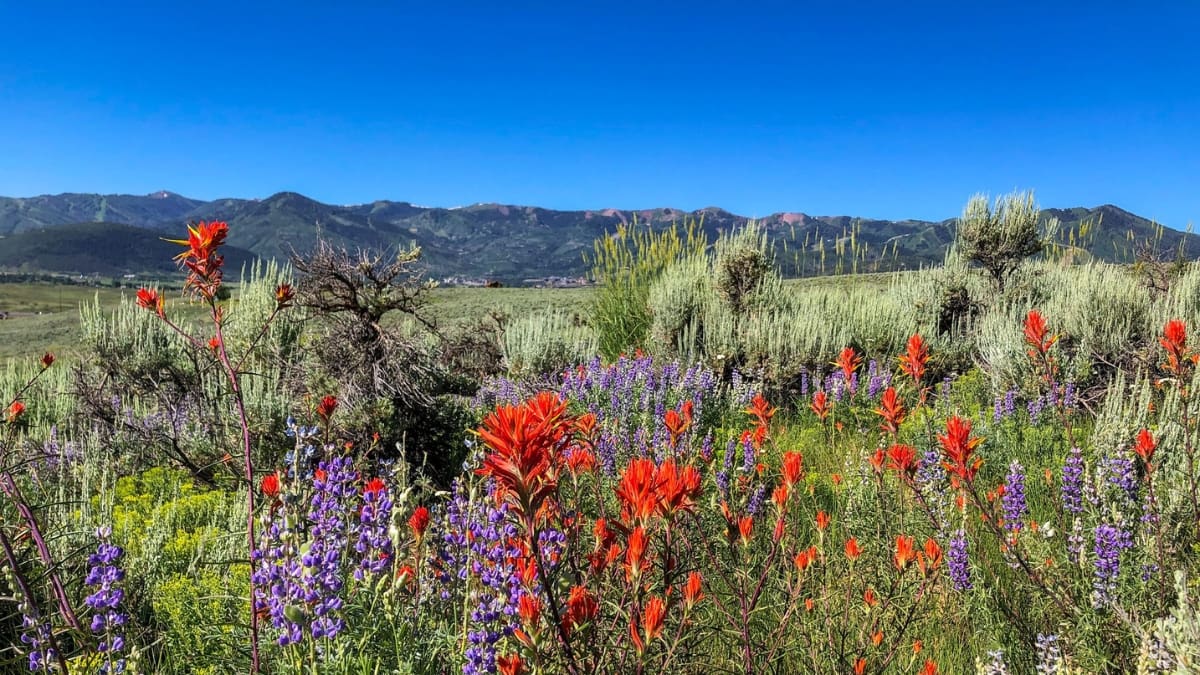Environment
Wildflower Wednesday: Wild Chamomile spreads across Park City trailheads
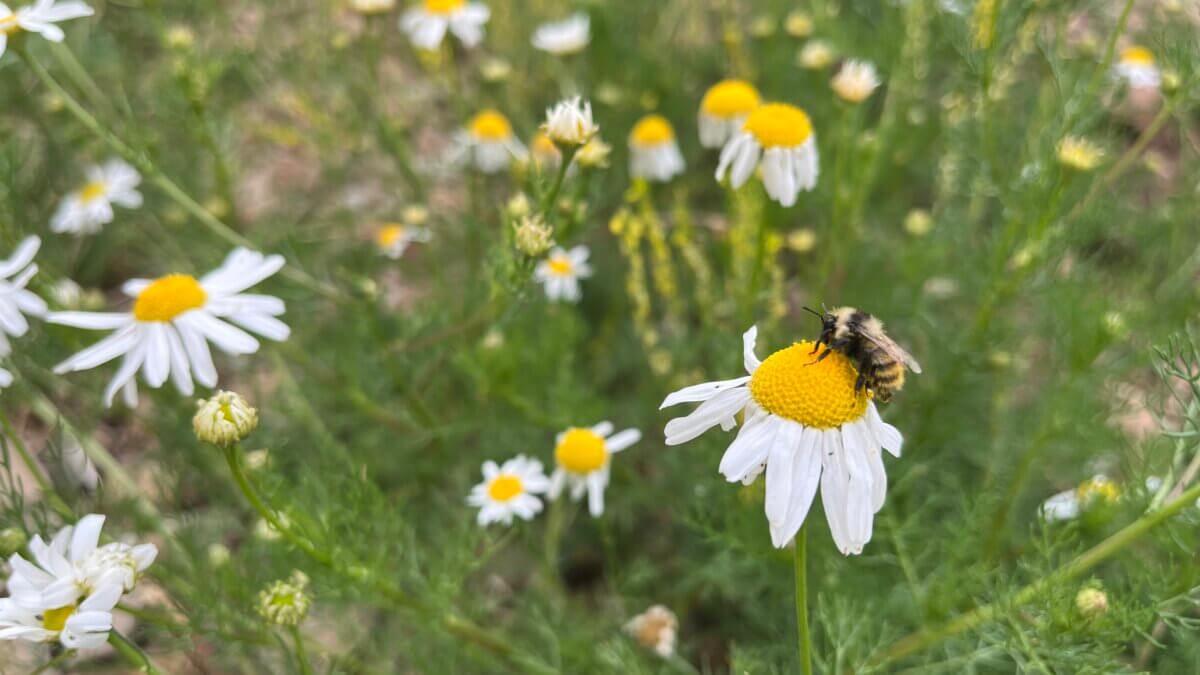
A bee collects pollen from stinking chamomile blooming along a Park City trail. Photo: Rebecca Brenner
PARK CITY, Utah — Stinking chamomile, a nonnative weed often called wild chamomile, is dotting Park City’s roadsides and trailheads at the height of its summer bloom.
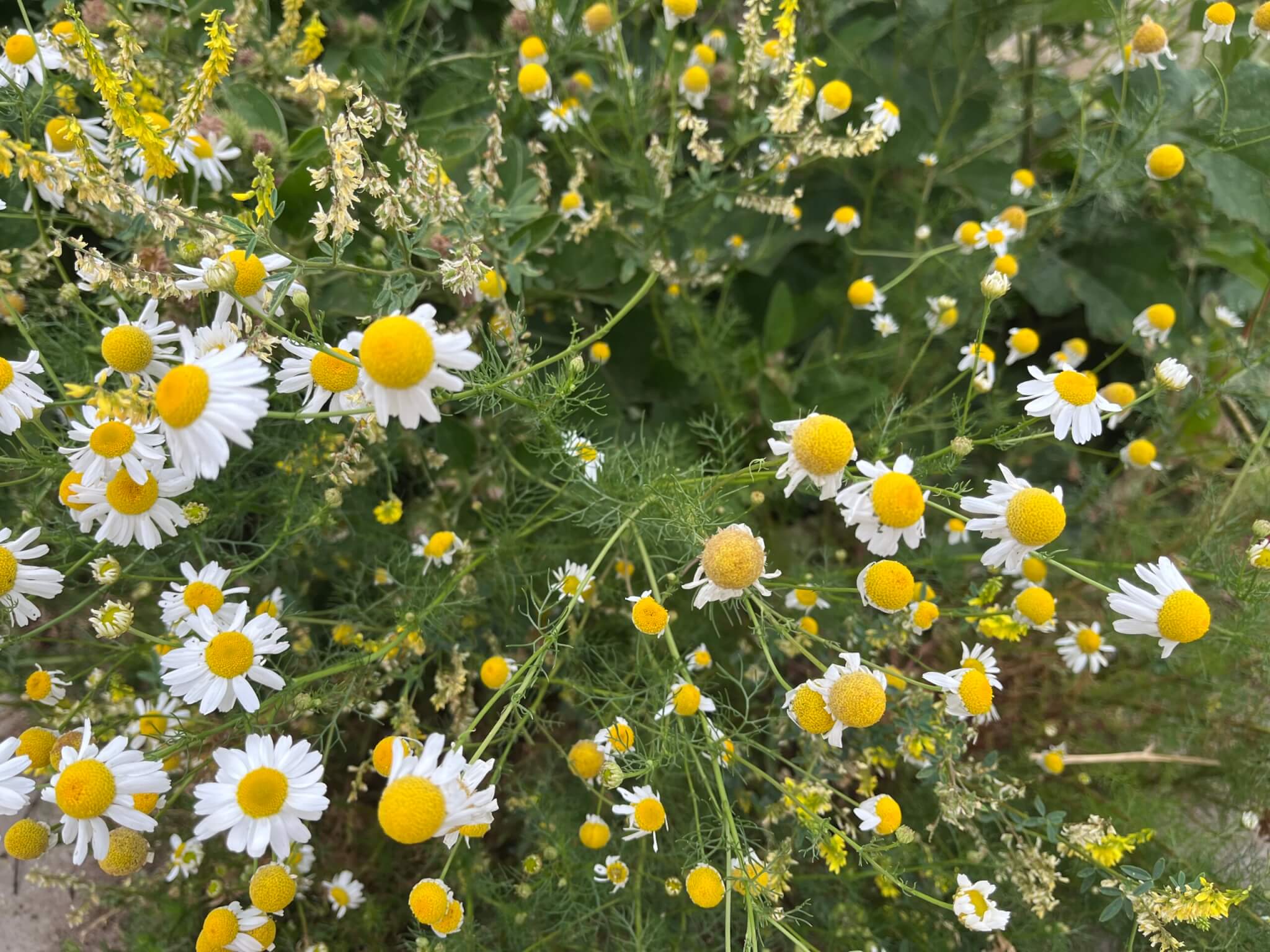
The American Southwest field guide notes the species (Anthemis cotula) was introduced from North Africa and Europe and is now recorded in scattered parts of every U.S. state, with the heaviest concentrations in the West.
Individual plants stand up to 2 feet tall on hairless, resin‑gland‑speckled stems. Leaves are pinnately divided two or three times into thread‑like lobes less than 2 inches long, releasing a sharp odor when bruised — the trait that inspired the “stinking” nickname.
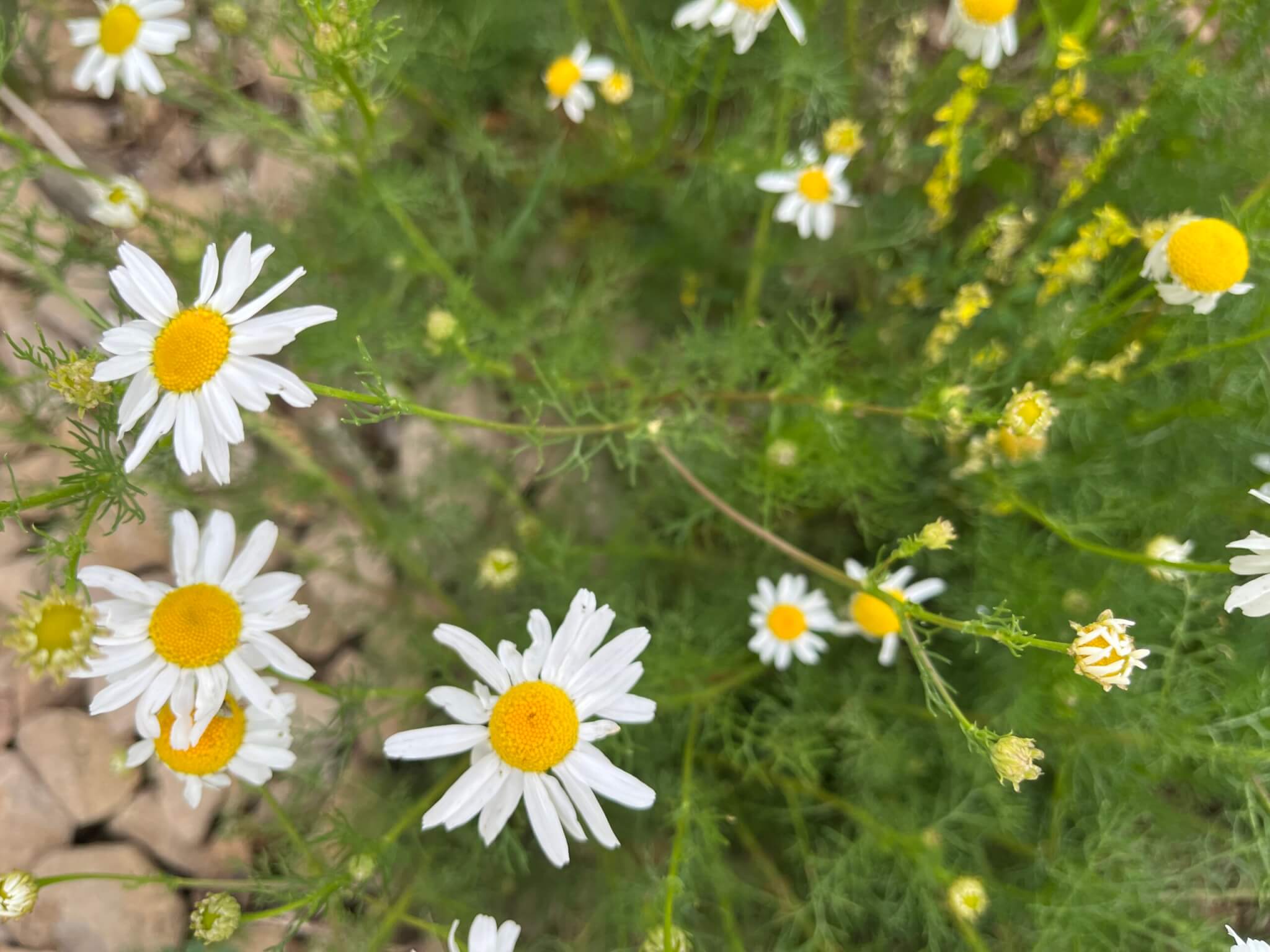
Each branch carries a single flower head about 1 inch across, ringed by 10 to 15 white ray florets that surround a domed cluster of as many as 300 yellow‑green disk florets. Rays sometimes sport twin notches at the tip and may disappear entirely on a few blooms.
According to the American Southwest field guide the annual thrives in disturbed soil — grasslands, sand dunes, woodland edges and freshly graded verges — from near sea level to elevations around 8,500 feet, a range that easily includes Summit County’s high‑country trail network.
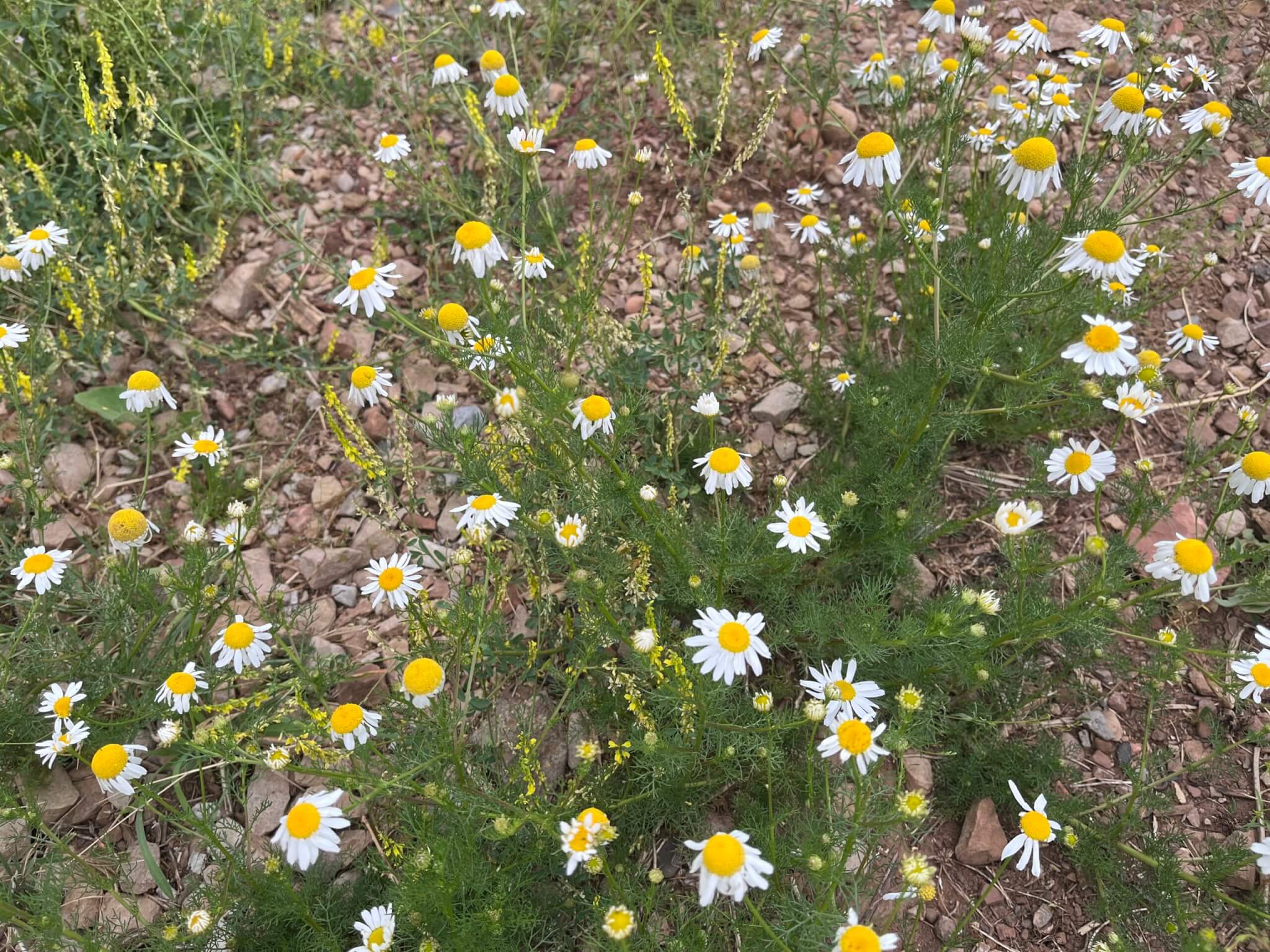
Classified as a weed, stinking chamomile can blanket newly opened ground before native vegetation gains a foothold. Hikers can confirm an identification by crushing a leaf or stem; a pungent scent and finely divided leaves distinguish the plant from look‑alike daisies.
TownLift’s Wildflower Wednesday series will continue tracking late-season blooms.Have photos/videos of Park City’s night sky? Share with tips@townlift.com for a chance to be featured!

















